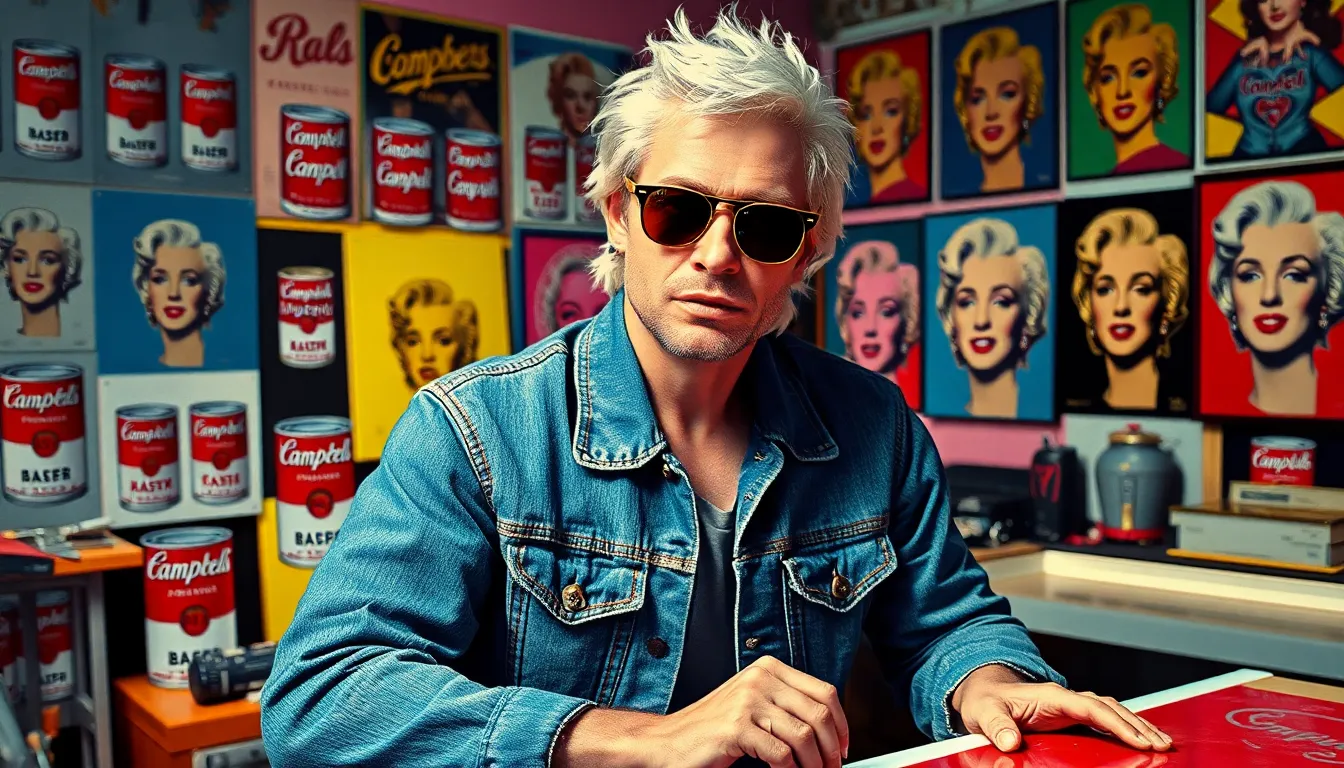Pop art emerged in the mid-20th century as a vibrant movement that challenged traditional boundaries of art. It drew inspiration from popular culture, blending everyday objects and mass media into a colorful tapestry of creativity. Artists like Andy Warhol and Roy Lichtenstein revolutionized the art world by incorporating commercial techniques and imagery, making art accessible and relatable to the masses.
The influences of pop art extend far beyond the canvas, permeating fashion, design, and even advertising. This movement not only redefined artistic expression but also sparked conversations about consumerism and identity in contemporary society. Understanding these influences reveals how pop art continues to shape cultural landscapes today, making it a pivotal force in the evolution of modern art.
Table of Contents
ToggleOverview of Pop Art Influences
Pop art emerged in the mid-20th century, drawing inspiration from various sources that reshaped the artistic landscape. Key influences include:
- Commercial Advertising
Commercial advertising played a crucial role in shaping pop art’s aesthetic. Artists incorporated recognizable brand logos and slogans, blurring the lines between high art and consumer culture.
- Mass Media
Mass media significantly influenced the themes and techniques of pop art. Television, magazines, and film provided a wealth of imagery, allowing artists to explore the intersection of art and popular culture.
- Consumerism
Consumerism’s rise during the post-war period impacted pop artists profoundly. They often critiqued materialism while simultaneously celebrating the allure of objects and commercial products.
- Comic Strips
Comic strips served as a visual language for pop artists like Roy Lichtenstein. His work emulated the bold lines and vibrant colors of comic book art, transforming everyday narratives into high art.
- Dada and Surrealism
Dada and surrealism laid the groundwork for pop art’s irreverent approach. These movements challenged norms, setting the stage for pop artists to question societal constructs through irony and playfulness.
- Youth Culture
The emergence of youth culture in the 1960s influenced pop art themes and techniques. Artists reflected the energy and style of rock music, fashion, and countercultural movements, capturing the spirit of a generation.
- Globalization
Globalization introduced diverse cultural elements into pop art. Artists embraced international influences, merging traditions and expanding the movement’s reach beyond Western confines.
These influences collectively shaped the trajectory of pop art, establishing it as a relentless force in contemporary culture. Through distinctive techniques and innovative themes, pop art continues to resonate with audiences, affirming its lasting legacy.
Historical Context

Pop art emerged in the mid-20th century as a revolutionary movement, reshaping the art landscape by embracing elements of popular culture and mass media. Its roots lie in a response to the post-World War II environment marked by rapid consumerism and changing societal values.
Emergence of Pop Art
Pop art’s emergence in the 1950s and 1960s interconnected with rising consumer culture and advancements in mass media. Artists began to draw inspiration from advertising, comic strips, and everyday objects. This incorporation reflected a shift from traditional artistic subjects to more accessible themes, highlighting the relationship between art and consumerism. The movement gained prominence in cities such as New York and London, where the artistic community embraced the aesthetics of commercial culture.
Key Figures in Pop Art
Prominent artists defined the pop art movement through their innovative approaches and distinct styles:
- Andy Warhol: Known for stainless silkscreen techniques, Warhol popularized the notion of art as a commercial product. His repetition of iconic images like Campbell’s soup cans and Marilyn Monroe’s portraits challenged perceptions of originality and valuable art.
- Roy Lichtenstein: Using a comic strip-inspired technique, Lichtenstein transformed everyday narratives into high art. His bold colors and Ben-Day dots emphasized the aesthetic qualities of commercial illustration.
- Richard Hamilton: Often credited with coining the term “pop art,” Hamilton’s work blended popular culture with contemporary design, positioning himself as a forebear of the movement.
- Claes Oldenburg: Oldenburg’s soft sculptures of common objects challenged traditional sculptural forms, introducing humor and irony into everyday items.
These key figures collectively contributed to the movement’s dynamic character, influencing the broader cultural landscape and kicking off discussions around the intersections of art, consumerism, and identity.
Visual Elements of Pop Art
Pop art’s visual elements prominently feature bold colors, striking compositions, and recognizable symbols that challenge conventional art forms.
Color and Composition
Pop art utilizes vibrant, saturated colors that evoke emotional responses. Artists like Andy Warhol employed contrasting colors to create visual impact and draw attention to everyday objects. Composition often embraces symmetry and repetition, enhancing the sense of familiarity. For example, Warhol’s famous Campbell’s Soup Cans series repeats the same image, reinforcing the consumer culture motif. This approach allows viewers to re-examine the commonality of commercial products, turning mundane items into art.
Iconography and Symbols
Pop art integrates iconic imagery and symbols from popular culture. Artists frequently reference comics, advertisements, and celebrities, which blur the lines between high art and mass media. Roy Lichtenstein, for instance, transformed comic book panels into monumental artworks using Ben-Day dots to replicate the printing techniques of commercial graphics. This method not only honors the source material but also critiques the commodification of images. Recognizable symbols like brand logos and consumer goods become central elements, reflecting society’s obsession with consumerism and celebrity culture.
Cultural Impact of Pop Art Influences
Pop art profoundly impacted various cultural spheres, transforming perspectives and pushing boundaries across art forms and popular culture.
Influence on Contemporary Art
Contemporary art reflects numerous elements derived from pop art. Artists frequently experiment with commercial mediums and techniques, echoing pop art’s ideals. Many contemporary artists, such as Takashi Murakami and Jeff Koons, adopt pop art’s bold aesthetics while addressing themes like consumerism, identity, and society. Mixed media and installation art often incorporate everyday objects and imagery, a direct nod to pop art’s foundational principles. Movements like postmodernism draw significantly from pop art, merging high and low culture, thus redefining what constitutes art today.
Influence on Popular Culture
Popular culture continuously integrates pop art influences, manifesting in fashion, music, and advertising. Fashion designers frequently use vibrant colors and iconic imagery reminiscent of Warhol and Lichtenstein. Music videos often feature pop art-inspired aesthetics, bridging art and entertainment. Advertising campaigns emulate pop art’s visual boldness, utilizing recognizable symbols to capture audience attention. The revival of retro styles in graphic design reflects a nostalgic return to pop art’s impact, ensuring its relevance in contemporary culture across multiple platforms.
Pop art’s vibrant legacy continues to resonate in today’s cultural landscape. Its bold aesthetics and integration of popular culture have paved the way for contemporary artists to explore themes of consumerism and identity. By challenging traditional art boundaries, pop art not only democratized artistic expression but also sparked critical conversations about society’s relationship with mass media.
As its influences permeate fashion, design, and advertising, pop art remains a vital force in shaping modern creativity. The movement’s ability to blend high art with everyday life ensures its relevance for future generations, inspiring ongoing innovation and dialogue in the art world and beyond.


